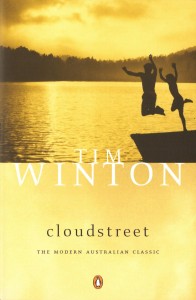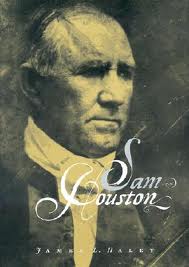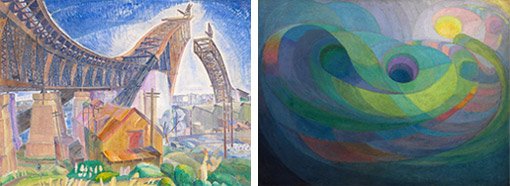Escapist reading par excellence. Recommended for fast-paced fun. If a diversion is needed from the daily rut, try this novel.
This is the fifth Ethan Gage novel I have read and I have enjoyed them a lot. What’s to like about them? First and foremost is the pace. They go a mile a minute. By page 50 Ethan has been involved in, always innocently, inadvertently, or mistakenly he would say, the burning down of a palace, a gigantic theft, a tumultuous revolution, a botched assassination attempt, and been bedded by the sister of a very powerful and angry brother who commands a battalion of villainous cutthroats. After the first 50 pages the action picks up speed! Whew.
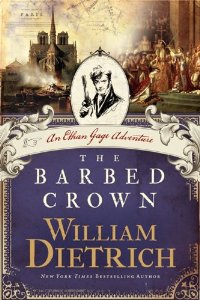 The fluid loyalties during the Napoleonic wars and peaces provide the context. As an American Ethan is sometimes welcomed by either agents of France or Britain or both, but only briefly as alliances, wars, peaces come and go. Ethan was there when the Rosetta Stone came to light in Egypt. He found the tree at the centre of the world in the Louisiana Purchase, he triggered a slave rebellion in the Caribbean, he was captured by Barbary pirates…..what a curriculum vitae he has.
The fluid loyalties during the Napoleonic wars and peaces provide the context. As an American Ethan is sometimes welcomed by either agents of France or Britain or both, but only briefly as alliances, wars, peaces come and go. Ethan was there when the Rosetta Stone came to light in Egypt. He found the tree at the centre of the world in the Louisiana Purchase, he triggered a slave rebellion in the Caribbean, he was captured by Barbary pirates…..what a curriculum vitae he has.
Then there is Ethan’s self-deprecating humour. Though he knows himself to be a bumbler extraordinaire his reputation as the James Bond of his time just grows and grows. He knows himself to be a peaceful scientist, though he has been instrumental in the outcome at the Siege of Acre and the Battle of the Trafalgar while trying to get home in time for dinner. He knows himself to be a faithful husband….Can he help it if all the women he encounters are beautiful and throw themselves at him? His wife certainly thinks so and she has had to come and get him out of trouble more than once, cutlass in hand.
The novels are peopled by historical figures like Napoleon, Pitt the Younger, Toussaint Louverture, Horatio Nelson and others. These luminaries, constantly plotting against each other, see in Ethan a catspaw. They lie to him, manipulate him, tempt him and he has little resistance to any of it. Hope ever trumps experience, and Ethan thinks he can outsmart these puppet masters and he is always wrong. Fortunately he never learns and comes back for more in the next novel!
I went through a Napoleon phrase once. Why? I was fascinated by fragmentary accounts I had come across of his ability to multi-task anywhere, to micro-manage from afar, to shift gears in an instant from one problem to another, to size up a man and extract what he needed from him, coupled with the inability to see reality (think Russia or the catastrophic naval exercise at Boulogne), all of these made me wonder how he did it. I was also fascinated to see the practical improvements at Versailles to make work more efficient, e.g., a table in the bath, seats for secretaries to take notes while he performed ‘the essential tasks,’ as Aristotle called them. (Figure it out.) I read three biographies, all of them weighty tomes. I cannot list the titles because I did not find answers in any of them so there were no notes. Here he is again in these books, dominating much of the world.
NB there is a reference to Machiavelli on p124 ‘Napoleon was building a clan worthy of Machiavelli.’ (Huh?)
I do hope Ethan Gage does not yet retire, as he often dreams of doing, because he has not yet visited his particular brand of mayhem on India. There another whole continent awaits him! I thought this one to be a return to top form, as I found the last one in the Caribbean a little forced. This one meets the rollick standard.
After the steeped sorrow of Carson McCullers, Ethan Gage is a welcome change of pace.

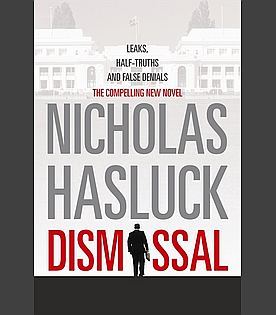
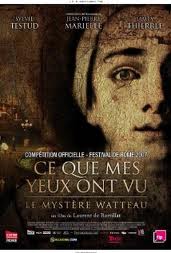 A little tension is added to the plot with a thesis supervisor who discourages the quest. We discover he pursued the same line once and it came to nothing. Is he simply trying to steer her onto safe ground, or is he, brusk and uncommunicative, hiding something?
A little tension is added to the plot with a thesis supervisor who discourages the quest. We discover he pursued the same line once and it came to nothing. Is he simply trying to steer her onto safe ground, or is he, brusk and uncommunicative, hiding something?
